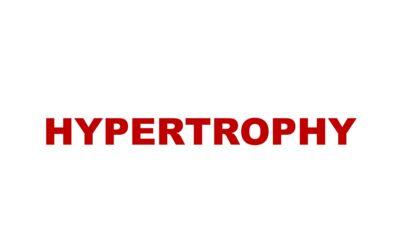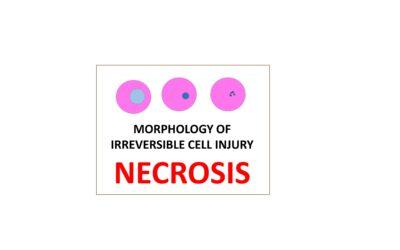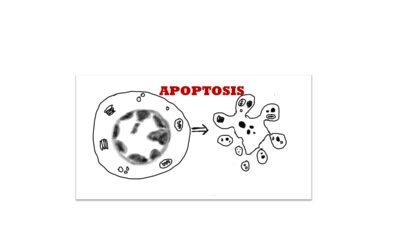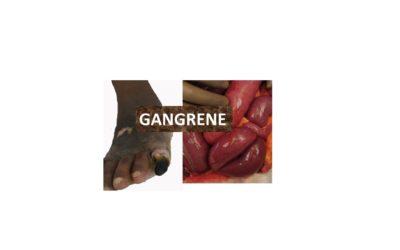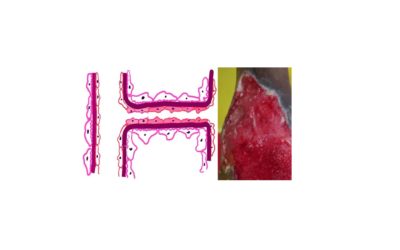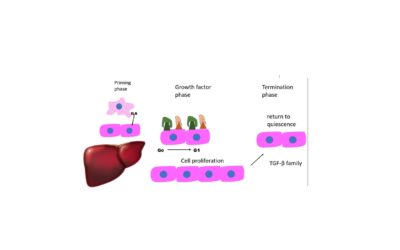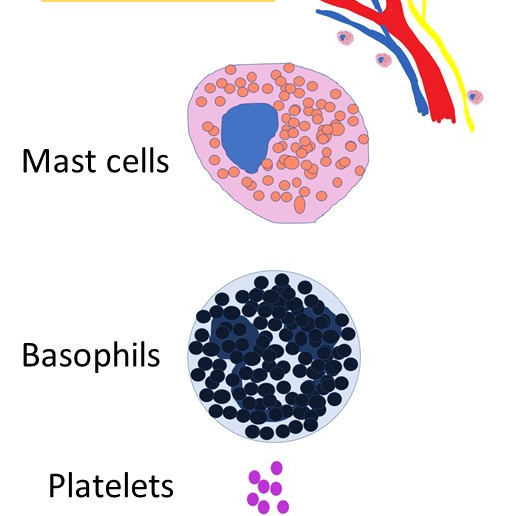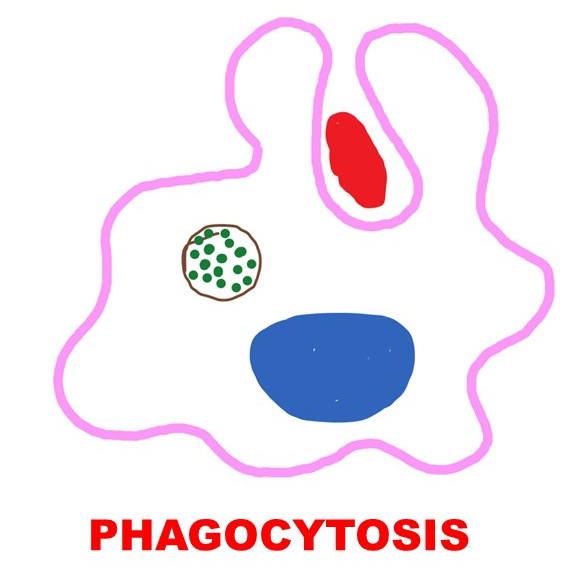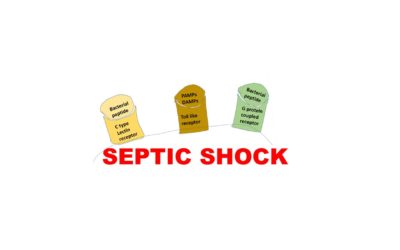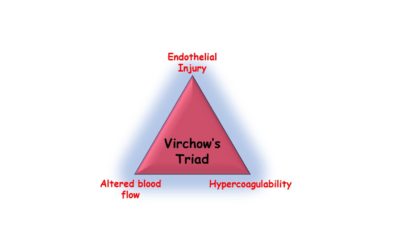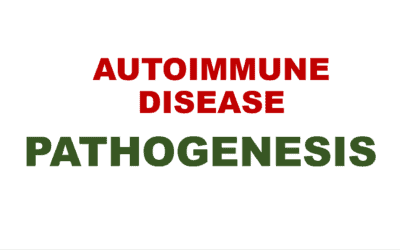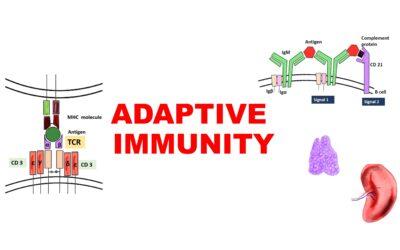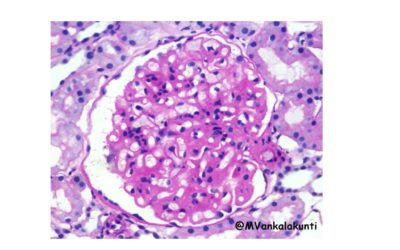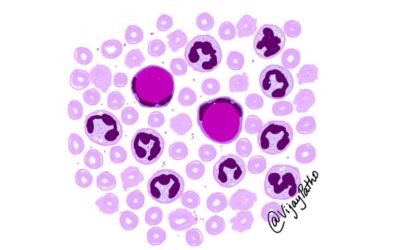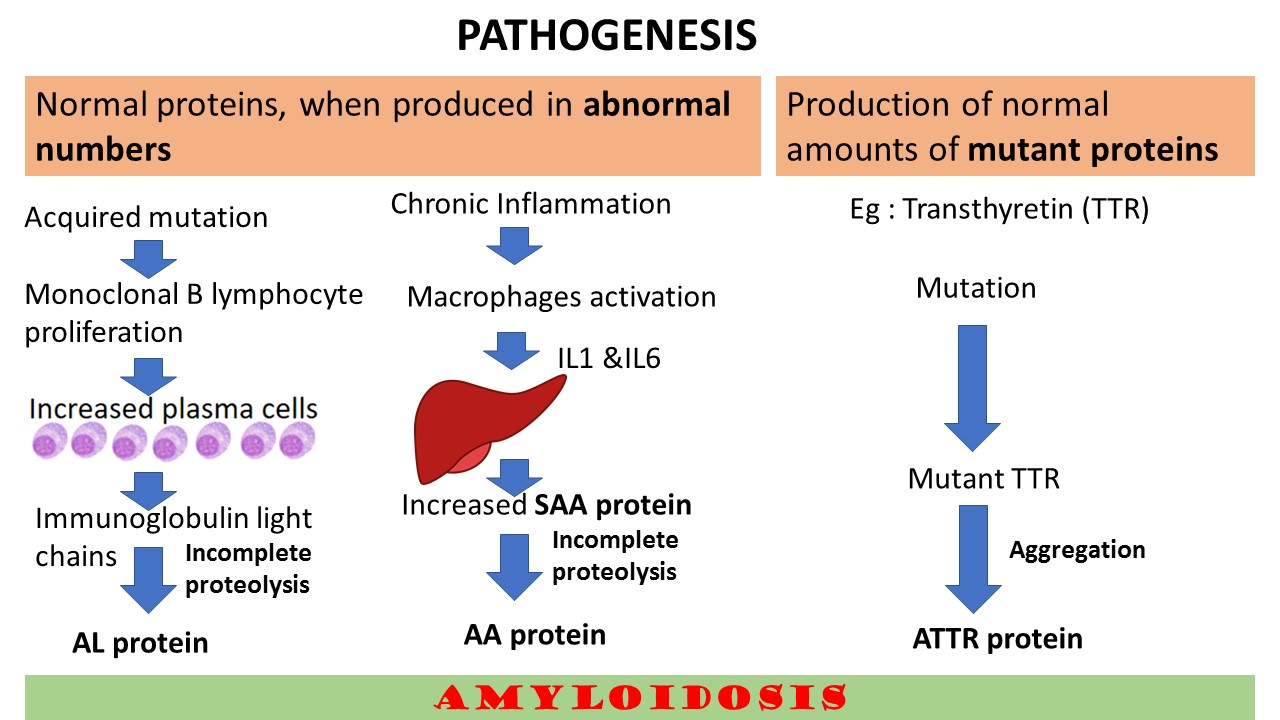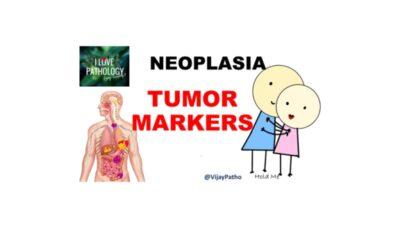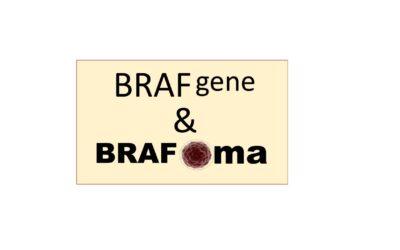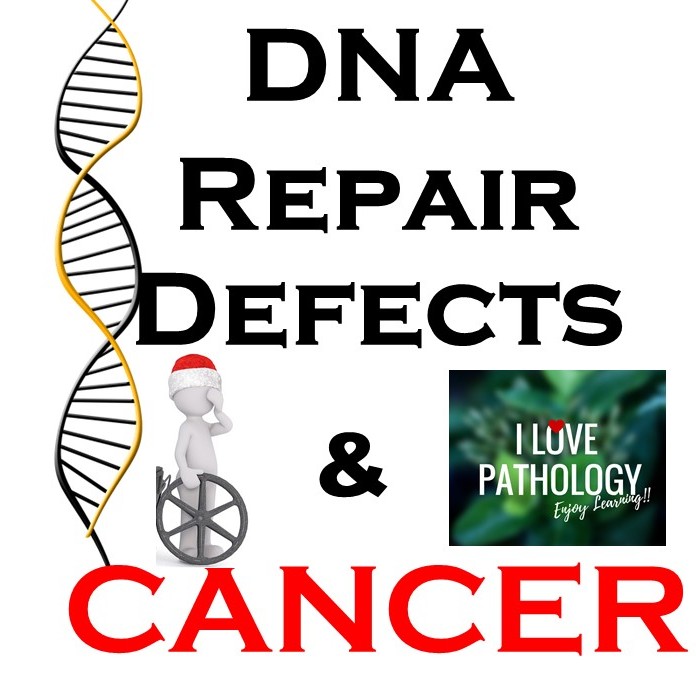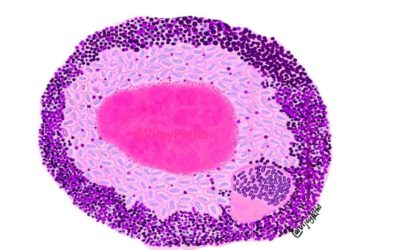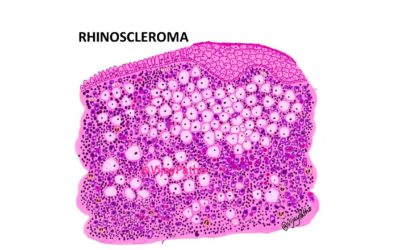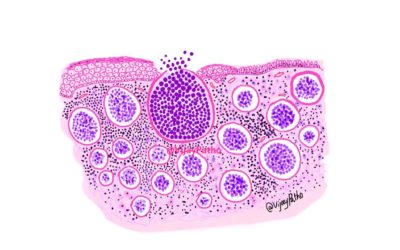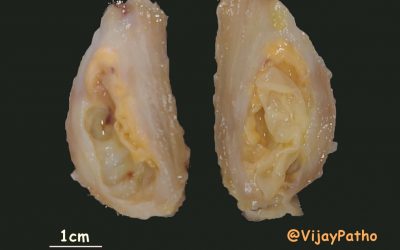Cell Injury & Adaptation
Metaplasia: Types and Causes
What is metaplasia? Metaplasia is a reversible cellular adaptation in which one differentiated cell type (epithelial or mesenchymal) is replaced by another cell type. This change occurs in response to chronic inflammation or irritation and represents a survival...
Hyperplasia- Mechanism and Causes
What is hyperplasia? Hyperplasia is an increase in the number of cells in an organ or tissue, which can lead to the organ's enlargement. This process only occurs if the cell population is capable of dividing. Can all cells undergo hyperplasia? No, NOT all cells can...
Hypertrophy: Mechanism & Causes
What is hypertrophy? Hypertrophy is the increase in the size of the parenchymal cells in an organ. What causes hypertrophy? Hypertrophy can be caused by increased functional demand or stimulation by hormones and growth factors. Essentially, when an organ is under...
Atrophy: Mechanism & Causes
What is Cellular Adaptation? Cellular adaptation refers to the process by which cells adjust to their environment in response to stress or abnormal conditions. This adjustment allows the cells to survive and continue functioning as that of normal, but in a potentially...
Morphology of Irreversible cell Injury : NECROSIS
Define Necrosis: Necrosis is a process of localized cell death followed by the degradation of tissue by hydrolytic enzymes. It is characterized by the inability of the cells to maintain membrane integrity, leading to the leakage of cellular contents that elicit an...
Apoptosis
Apoptosis (pronounced apo- toe-sis) 1 Introduction Cells can die in many ways and for many reasons There are several pathways of cell death (more than 20 are identified at present) among which the ones which have been most studied are necrosis (also called accidental...
PATHOLOGY OF GANGRENE
GANGRENE Necrosis of tissue with superadded putrefaction Latin gangraena <Greek gángraina ‘an eating sore’ /eroding ulcer DRY GANGRENE Commonly occurs in limbs Due to ischemia Organ is dry, shrunken and black Limited putrefaction Line of demarcation present...
MORPHOLOGY OF IRREVERSIBLE CELL INJURY: Cytoplasmic and Nuclear Changes
Let us understand some basic concept of cytoplasmic and nuclear changes in irreversible cell injury CYTOPLASMIC CHANGES: 1. Looks more pink! INCREASED EOSINOPHILIA: Two important reasons for this a. In a routine Hematoxylin and Eosin staining of a tissue, the...
Pathologic Calcification & Cell Aging
Pathologic calcification is the abnormal deposition of calcium salts in tissues other than bone or enamel. This presentation helps you in understanding the different types of calcification. The concepts of cell aging are discussed in detail. Watch the video tutorials...
Intracellular Accumulations
This presentation helps you in understanding various Intracellular accumulations. These accumulations are the manifestations of various metabolic derangements. The different categories of intracellular accumulations are discussed watch the Video tutorials below...
Inflammation & Repair
TISSUE REPAIR: Abnormalities/ Complications in wound healing
ABNORMALITIES IN TISSUE REPAIR Complications of wound healing These can be classified as follows 1. Defects in Healing a.WOUND DEHISCENCE b.CHRONIC WOUNDS Venous ulcers Arterial ulcers Diabetic ulcers Pressure sores 2. Excessive cell proliferation EXUBERANT...
TISSUE REPAIR: Wound Healing
WOUND HEALING Healing of skin wounds Based on the nature and size of the wound, skin wound heals by either of the two process 1. Healing by FIRST intention ( primary union) injury involves only the epithelial layer Clean, uninfected surgical incision approximated by...
TISSUE REPAIR: By Connective tissue deposition. Angiogenesis & Tissue remodeling
TISSUE REPAIR BY CONNECTIVE TISSUE DEPOSITION ( SCARRING) If repair cannot be accomplished by regeneration alone, then Replacement of the injured cells with connective tissue takes places which "patches" the tissue and this is referred to as SCAR. The various steps...
TISSUE REPAIR: General concepts & Mechanism of Regeneration
TISSUE REPAIR Restoration of tissue architecture & Function After an injury is referred to as REPAIR or HEALING. REPAIR occurs by two processes 1. REGENERATION: Restores normal cells. occurs in tissue with Cells having capacity to proliferate 2. SCARRING:...
Chemical Mediators of Inflammation: CYTOKINES : Interleukins & Chemokines
Chemical Mediators of Inflammation: CYTOKINES : Interleukins & Chemokines 1. What are cytokines The word cytokine is a combination of two Greek words – • "cyto" meaning cell and "kinos" meaning movement. Cytokines are low molecular weight regulatory proteins or...
Chemical Mediators of Inflammation: ARACHIDONIC ACID METABOLITES
Chemical Mediators of Inflammation: ARACHIDONIC ACID METABOLITES 1. What is arachidonic acid Arachidonic acid is a polyunsaturated fatty acid present in the phospholipids of the cell membranes. Normally it is esterified to these phospholipids. This bound arachidonic...
Chemical Mediators of Inflammation: HISTAMINE & SEROTONIN
1. What are chemical mediators These are the substances that INITIATE & REGULATE Inflammatory reactions. 2. Describe the general properties of chemical mediators a. These mediators can be produced Locally, by the CELLS and are called CELL- DERIVED. / Derived from...
INFLAMMATION Part 3: Leukocyte Activation – PHAGOCYTOSIS
Define Phagocytosis It is A process Which involves the recognition , engulfment and digestion of Microbes, dead cells an foreign bodies. Greek word Phagein, meaning "to devour" kytos, meaning "cell", and -osis, meaning "process") Also referred to as “cell eating” in...
INFLAMMATION Part 2: Cellular Events- Leukocyte Recruitment.
What are the cellular events in inflammation General Principles The influx of the leukocytes ( neutrophils & Monocytes) to the site of injury These leukocytes ingest and destroy the injurious agents ( microbes/necrotic tissue/foreign bodies), The process is known...
INFLAMMATION Part 1: General Concepts, Types, Vascular Changes in Acute Inflammation
Define Inflammation Inflammation is defined as a local response of living tissue to any injurious agent. This is basically a protective response needed for survival. Historical aspects: The word inflammation from the Latin inflammare (to set on fire). Celsus , Roman...
Hemodynamic Disorders
Pathology of Septic shock
Shock: is a state of circulatory failure that impairs tissue perfusion & and leads to cellular hypoxia. Types of Shock Cardiogenic:Myocardial failure leading to low cardiac output. Eg- Myocardial infarction, Arrythmias, embolism etc. Hypovolemic: Low blood volume...
THROMBOSIS
Thrombosis is the inappropriate activation of blood clotting in intact vasculature or after minor injury. The three main factors, which contribute to thrombus formation, namely Endothelial injury, Alterations in blood flow and Hypercoaguability are together called...
CHRONIC VENOUS CONGESTION – LUNG
Congestion Versus Hyperemia Congestion: it is a passive process which results due to impaired outflow of venous blood from a tissue Should not be confused with hyperemia. Hyperemia is an active process which results due to dilatation of arterioles and increased inflow...
Diseases of Immune System
Autoimmune disease- Pathogenesis
Why do autoimmune diseases develop? Autoimmune diseases develop when there is an imbalance between the activation of lymphocytes (immune cells) and the mechanisms that keep them from attacking the body's own tissues. This imbalance can be caused by: Inheritance of...
Autoimmune disease: Self tolerance
What is an autoimmune disease? An autoimmune disease occurs when the immune system mistakenly attacks the body’s own tissues. This happens due to an immune reaction against self-antigens. When can a disease be classified as an autoimmune disease? A disease is...
Type II Hypersensitivity
What is Type II Hypersensitivity? Type II hypersensitivity, also known as antibody-mediated hypersensitivity, involves the immune system's response where antibodies interact antigens attached to cell surfaces or within the extracellular matrix, leading to tissue...
Type I Hypersensitivity reaction.
Type I Hypersensitivity reaction. What are hypersensitivity reactions? Hypersensitivity reactions are injurious immune reactions characterized by excessive or harmful reactions of the immune system to antigens. The antigens can be exogenous from the environment or...
ADAPTIVE IMMUNITY
What is adaptive immunity? Adaptive immunity is part of the immune system that consists of lymphocytes and their products, including antibodies. It is classified into humoral immunity, which combats extracellular microbes and toxins, and cell-mediated immunity, which...
SYSTEMIC LUPUS ERYTHEMATOSUS: Lab Diagnosis & Morphology
SYSTEMIC LUPUS ERYTHEMATOSUS LABORATORY DIAGNOSIS OF SYSTEMIC LUPUS ERYTHEMATOSUS : The hallmark of SLE is the production of autoantibodies against nuclear and few cytoplasmic components that are neither organ or species specific Four categories: • Antibodies to DNA •...
SYSTEMIC LUPUS ERYTHEMATOSUS: Etiopathogenesis & Clinical features
SYSTEMIC LUPUS ERYTHEMATOSUS (SLE) SLE is the prototype of a multisystem disease of autoimmune origin, characterized by a vast array of autoantibodies, particularly antinuclear antibodies (ANAs) in which injury is caused mainly by deposition of immune complexes and...
AMYLOIDOSIS: PART 3: Morphology, Diagnosis, Special stains, clinical features & Prognosis
What are the Organs Involved in Amyloidosis? The organs involved are as under Primary Amyloidosis: Heart, GIT, Respiratory tract, peripheral nerves, skin and tongue Secondary Amyloidosis: Kidney, liver, spleen, lymphnode adrenals and thyroid Familial Mediterranean...
AMYLOIDOSIS: PART 2: Pathogenesis & Classification
Describe the Pathogenesis of Amyloidosis The basic mechanism in the pathogenesis of amyloidosis is abnormal folding of proteins or misfolded proteins. Under normal circumanstances, these abnormal or misfolded proteins are degraded by proteasome pathway...
AMYLOIDOSIS: Part 1: Definition, Historical aspects & Properties of Amyloid
Define Amyloidosis Is a condition associated with number of inherited and inflammatory disorders in which There is deposition of Predominantly Extracellular fibrillar proteins RESULTING IN Tissue damage & functional compromise. These are Aggregates of MISFOLDED...
Neoplasia
Tumor Markers
Tumor markers are substances that are produced by tumor or cancer cells, or by other cells in response to a tumor or cancer. They can be found in the blood and other body fluids. However, tumor markers are not specific to cancer and can also be expressed by healthy...
BRAF Gene and “BRAFoma’s”
BRAF Gene and BRAFomas Welcome to ilovepathology.com! In this blog post, we will explore the BRAF gene and its significance in cancer development, specifically focusing on BRAFomas. Whether you're a medical student or simply interested in pathology, this Q&A-style...
GRADING AND STAGING OF CANCER
GRADING AND STAGING OF CANCER Grading and staging are methods used to quantify the probable clinical aggressiveness of a given neoplasm. The term "neoplasm" refers to the abnormal growth of cells that can form a mass or lump. Grading is based on the degree of...
Clinical manifestations of Cancer
Clinical Effects of Cancer In this blog, let us learn about the clinical manifestations of cancer, including the effects of neoplasia on patients, cancer cachexia, and paraneoplastic syndromes. You may even learn how products like CBD Oil can help ease some cancer...
TUMOR IMMUNITY
TUMOR IMMUNITY IMMUNE SURVEILLANCE Function of the immune system is to constantly “scan” the body for emerging malignant cells and destroy them If tumors grow in immunocompetent individuals, the reasons include 1. Tumor cells are invisible to host immune system 2....
Sonic Hedgehog pathway
Sonic Hedgehog pathway Sonic Hedgehog pathway is one of the complex signal transduction mechanism that controls or governs the process of cellular development. The Hedgehog signaling pathway plays a critical role in the morphogenesis during embryogenesis....
Understanding AZZOPARDI PHENOMENON / EFFECT
AZZOPARDI PHENOMENON/EFFFECT This is a phenomenon observed as a histopathological findings where there is lacing of basophilic material around the small blood vessels in certain high grade tumors. This phenomenon was initially described by professor John G Azzopardi...
WARBURG EFFECT: Hallmark of CANCER. What, Why & How?
WARBURG EFFECT: Hallmark of CANCER. What, Why & How? What is Pasteur Effect? In normal cells, in the presence of adequate oxygen, ATP is generated by oxidative phosphorylation. As the oxygen levels decrease, there is a shift from Oxidative phosphorylation to...
DNA repair Defects & Cancer
[su_youtube...
p53 Gene: The Guardian of the Genome
[su_youtube...
Genetic Disorders
Infectious, Environmental & Nutritional Disorders
TUBERCULOUS LYMPHADENITIS
It is a chronic granulomatous inflammation of the lymph node with the presence of caseation necrosis. It is caused by infection with Mycobacterium tuberculosis. It is one of the most common extrapulmonary manifestations of tuberculosis. TB lymphadenitis may occur due...
ACTINOMYCOSIS
Actinomycosis is a chronic, suppurative granulomatous inflammation caused by Actinomyces israelli. Actinomyces israelli is a filamentous gram positive organism of genus Actinobacteria. It is a normal commensal in humans in the oral cavity, lower gastrointestinal tract...
RHINOSCLEROMA
Rhinoscleroma is an infectious chronic granulomatous disease of the upper respiratory tract caused by Klebsiella. rhinoscleromatis. Klebsiella rhinoscleromatis is an immotile, short, encapsulated, Gram-negative bacillus which has an affinity for nasal mucosa....
RHINOSPORIDIOSIS
Rhinospoiridiosis It is a chronic granulomatous disease caused by Rhinosporidium seeberi which belong to class Mesomycetozoea . Mesomycetozoea, are new group of microorganisms which lie in between fungi and animals and are usually parasites of fish and other animals....
PATHOLOGY OF CYSTICERCOSIS
CYSTICERCOSIS Parasitic tissue infection caused by larval cysts of the tapeworm Taenia Solium. Cysticercus Stage in which the scolex is inverted in a sac like structure within various tissues. Definitive Host: Humans Intermediate host: pigs Cysticercosis results when...



